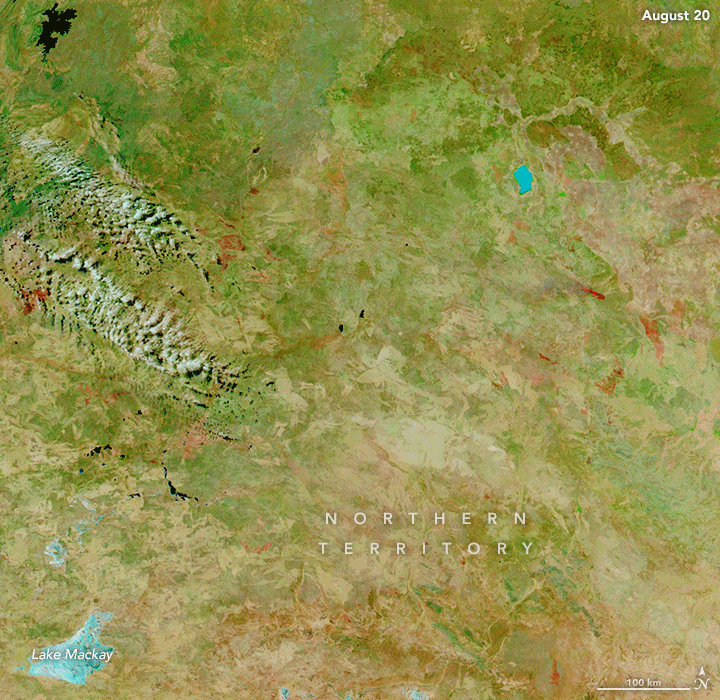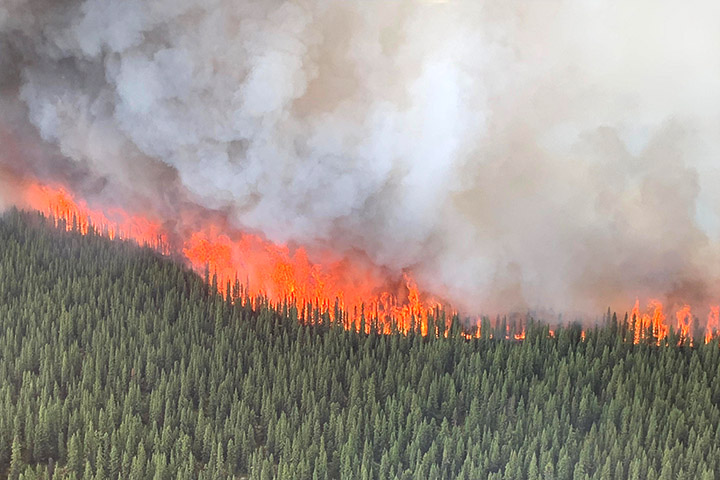


Earth has rightly been called a “water planet” because of the large percentage of the surface covered by oceans. But for the 30 percent that is land, the better name may be “fire planet.”
“Something is always burning somewhere,” said Niels Andela, a scientist at NASA’s Goddard Space Flight Center. Andela and colleagues recently compiled a global fire atlas—an easily accessible database chronicling the dynamics of 13.3 million fires observed by NASA’s Moderate Resolution Imaging Spectroradiometer (MODIS) instruments between 2003 and 2016. For each fire, the atlas contains detailed information about when each fire started and ended, in what direction it spread, how quickly it moved, and more.
“With the breadth and granularity of data in the Global Fire Atlas, we can start addressing nuanced questions like how fires respond to winds or to year-to-year variability in rainfall,” said Douglas Morton, chief of the Biospheric Sciences Laboratory at NASA’s Goddard Space Flight Center. “We know factors like these influence fire behavior, and the atlas is helping give us a clearer view of these impacts.”
Fires happen in almost all of Earth’s biomes. In tropical rainforests in South America and equatorial Asia, people take advantage of dry spells to burn trees to clear land for farms and pasture. In coniferous forests in Russia, Canada, Scandinavia, and Alaska, fire is a routine sign that summer heat and lightning have arrived. Increasingly, fires are even spreading through the Arctic, where there is little to burn other than grasses, sedges, and a few shrubs. The photograph below shows an intense crown fire raging through stand of black spruce in a boreal forest in Alaska on June 19, 2019.

The world’s largest and fastest spreading fires mostly occur in sparsely populated grasslands in Australia, Africa, and Central Asia, according to the fire atlas. The largest fire in the record burned in a remote part of Australia’s Northern Territory in 2007. Lightning ignited separate fires in multiple locations, of which the largest single fire charred a total of 40,026 square kilometers (15,454 square miles), an area nearly the size of Switzerland. That made the burn scar 40 times larger than the largest European fire in the atlas, 20 times larger than the largest North American fire, and 4 times larger than the largest African fire, noted Andela.
The series of false-color images at the top of the page shows the progression of the fire as observed by MODIS on Terra across 72 days. The image was made from a combination of infrared and visible light (MODIS bands 7-2-1) to make it easier to distinguish between burned areas and living vegetation. Burned areas appear brown; living vegetation is green; and water is light blue.
Forests and grasslands in North America and Europe tend to be more fragmented and heavily populated than savannas in Australia, making such large fires less likely. Also, firefighters in many parts of the world stop many of the largest fires. But in this part of Australia, fires are often allowed to burn naturally for long periods.
Decades of satellite data have made clear that El Niño and La Niña cycles play a key role in controlling the global abundance and distribution of fire. For instance, Andela explained that a La Niña in 2007 primed northern Australia for the huge burn by bringing extra rain, which boosted growth of trees and grasslands. This was followed by warm, dry weather that dried out the extra vegetation and turned it to tinder.
In the map of fire size above, other areas with large fires include grasslands and steppe areas in Africa, Kazakhstan, and western Russia. Fires that burned through boreal forests in North America and Siberia also tend to be large.
The longest-lasting fires in the atlas occurred in parts of northern Australia dominated by savanna. The ten longest Australian fires lasted an average of 102 days. In comparison, the ten longest fires in Asia persisted for an average of 78 days; they lasted 76 days in both Africa and North America; and just 41 days in Europe.
An interactive version of the fire atlas can be found here. And a listing of the top ten largest, fastest, and longest lasting fires in the atlas for each continent is available here.
NASA Earth Observatory images by Lauren Dauphin, using MODIS data from NASA EOSDIS/LANCE and GIBS/Worldview and Andela, N., et al. (2019). Photograph courtesy of InciWeb. Story by Adam Voiland.